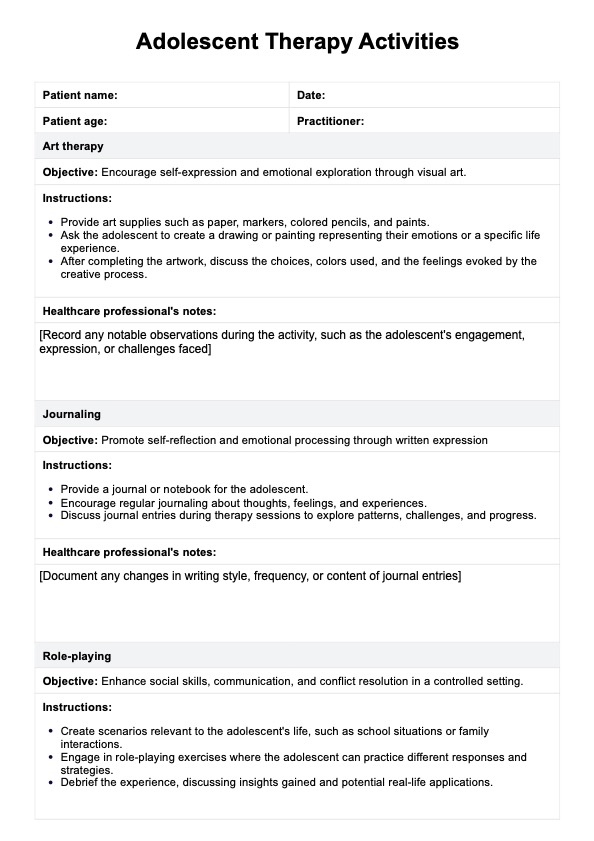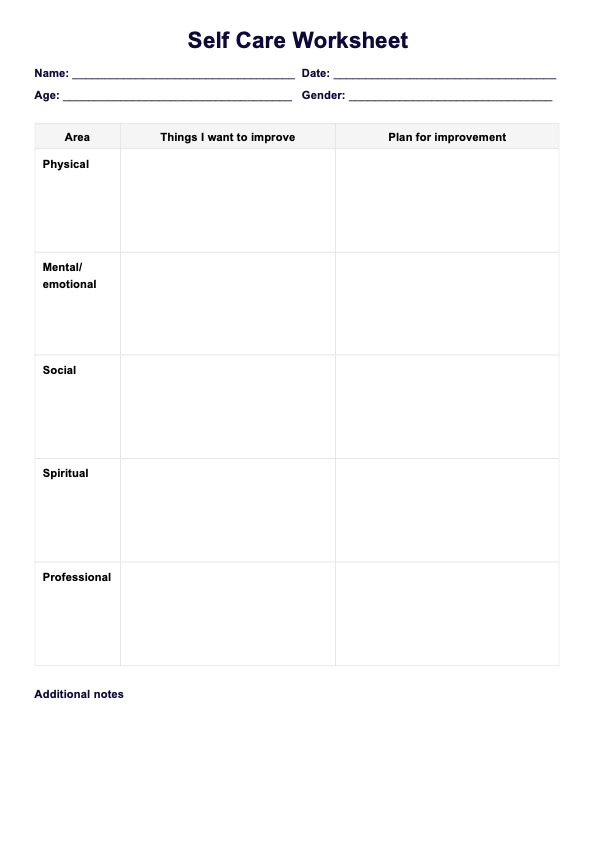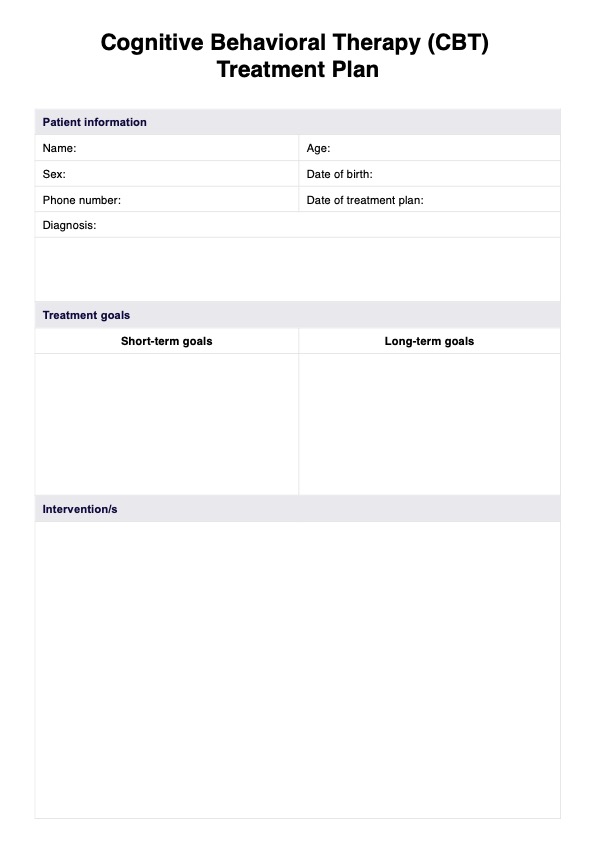Dementia Stages Chart
Explore the Dementia Stages Chart with our template. Tailor care plans, enhance communication, and understand symptoms.


Understanding the basics of dementia
Dementia is a broad term encompassing a range of cognitive disorders, with Alzheimer's disease being the most common form. Other forms of dementia include frontotemporal dementia and Lewy body dementia. In early-stage dementia, individuals might exhibit mild memory lapses and confusion, often dismissed as normal aging. As the disease progresses, memory loss and difficulties in communication and problem-solving become more pronounced. Emotional and behavioral changes may also occur, leading to increased frustration and anxiety.
As the person enters middle-stage dementia, they may require more assistance with daily tasks such as dressing, eating, and grooming. Hallucinations, delusions, and wandering can also become more prevalent. Gradually, the ability to recognize loved ones diminishes, and self-care becomes increasingly challenging.
In late-stage dementia, individuals become highly dependent on caregivers for even basic activities. They may lose the ability to walk, sit, and eventually swallow. Communication becomes extremely limited, and individuals often become bedridden.
Dementia Stages Chart Template
Dementia Stages Chart Example
What is a Dementia Stages Chart?
The Dementia Stages Chart stems from comprehensive collaboration and research in neurology, geriatrics, and mental health. It is based on models like the Global Deterioration Scale in the 1980s, which categorizes dementia into stages.
This categorization is founded on a rigorous study of cognitive decline and behavioral changes, leading to an evidence-based approach to dementia care. A Dementia Stages Chart is a visual aid showing various dementia stages. The chart maps the progression into typically seven stages of dementia, from no cognitive impairment to mild cognitive impairment to very severe cognitive decline.
Life expectancy for individuals with dementia depends on their level of impairment. Understanding stage-specific symptoms and needs helps caregivers, healthcare professionals, and family members develop tailored care plans, set realistic expectations, and communicate more effectively with each other. Whether monitoring daily changes or planning long-term care, this Dementia Stages Chart is an indispensable guide.
How does it work?
Understanding and utilizing a Dementia Stages Chart involves several key steps. This systematic approach helps tailor care and treatment for individuals at various stages, from mild to severe dementia:
Step 1: Download the chart
Download the Dementia Stages Chart from the link we've embedded on this page and save it on your device. The chart is also printable for easy access and quick reference. It can be placed in care settings or given to family members, facilitating consistent care and communication.
Step 2: Complete patient information
We've provided a patient basic information section at the top of the chart, which you can fill out during your sessions.
Step 3: Refer to the stages of dementia
The chart divides dementia into stages, from the early stages of the pre-dementia phase to severe cognitive decline. This helps gauge the progression and predict future care needs for each dementia stage.
Step 4: Note dementia symptoms
The chart describes some of each stage's specific cognitive, behavioral, and physical signs and symptoms, including mild dementia, where individuals may experience slight memory lapses and difficulty planning and organizing tasks. This focused insight enables accurate assessment and timely intervention. For each stage, we also included blank spaces by which you can note other symptoms or observations.
Step 5: Provide personalized care planning
Based on the identified stage and symptoms, care plans can be customized to meet the individual's needs and preferences. This involves selecting appropriate therapies, support services, and living arrangements that align with the stage of dementia.
When would you use this chart?
Using Dementia Stages Charts is essential in various scenarios, specifically within the context of dementia diagnosis and management:
Initial diagnosis
When a patient is initially diagnosed with dementia or exhibits signs of cognitive impairment, the chart assists healthcare providers in determining the stage of the disease. This stage-based assessment lays the foundation for all future care and treatment planning.
Caregiver and family guidance
For caregivers and family members, the Dementia Stages Charts provide a clear framework for understanding what to expect as dementia progresses. This clarity helps align expectations and prepares everyone involved to provide appropriate support and compassion.
Ongoing monitoring and assessment
Regular reference to the chart enables the continuous evaluation of symptoms and the patient's overall condition. This ongoing assessment ensures that care and interventions are timely adjusted to match the patient's changing needs.
In specialized care settings
The Dementia Stages Charts are vital references for mental health professionals and staff in assisted living or memory care facilities. They enable a unified approach to care, ensuring that all team members understand the patient's current stage and specific needs.
Holistic approach to treatment
The charts enable the integration of medical, psychological, and social care by encapsulating the multifaceted nature of dementia. It ensures a person-centered approach, recognizing the individuality of each patient's journey through dementia.
Educational resource
Beyond clinical use, the charts also serve as educational tools for those seeking to better understand dementia, including students, volunteers, or community members involved in dementia care.
Commonly asked questions
Medical professionals, caregivers, and family members can use the Dementia Stages Charts.
You can use this chart when caring for someone diagnosed with dementia or displaying symptoms.
The Dementia Stages Charts are used for tracking the progression of dementia, planning care, and communicating between healthcare providers.

.jpg)
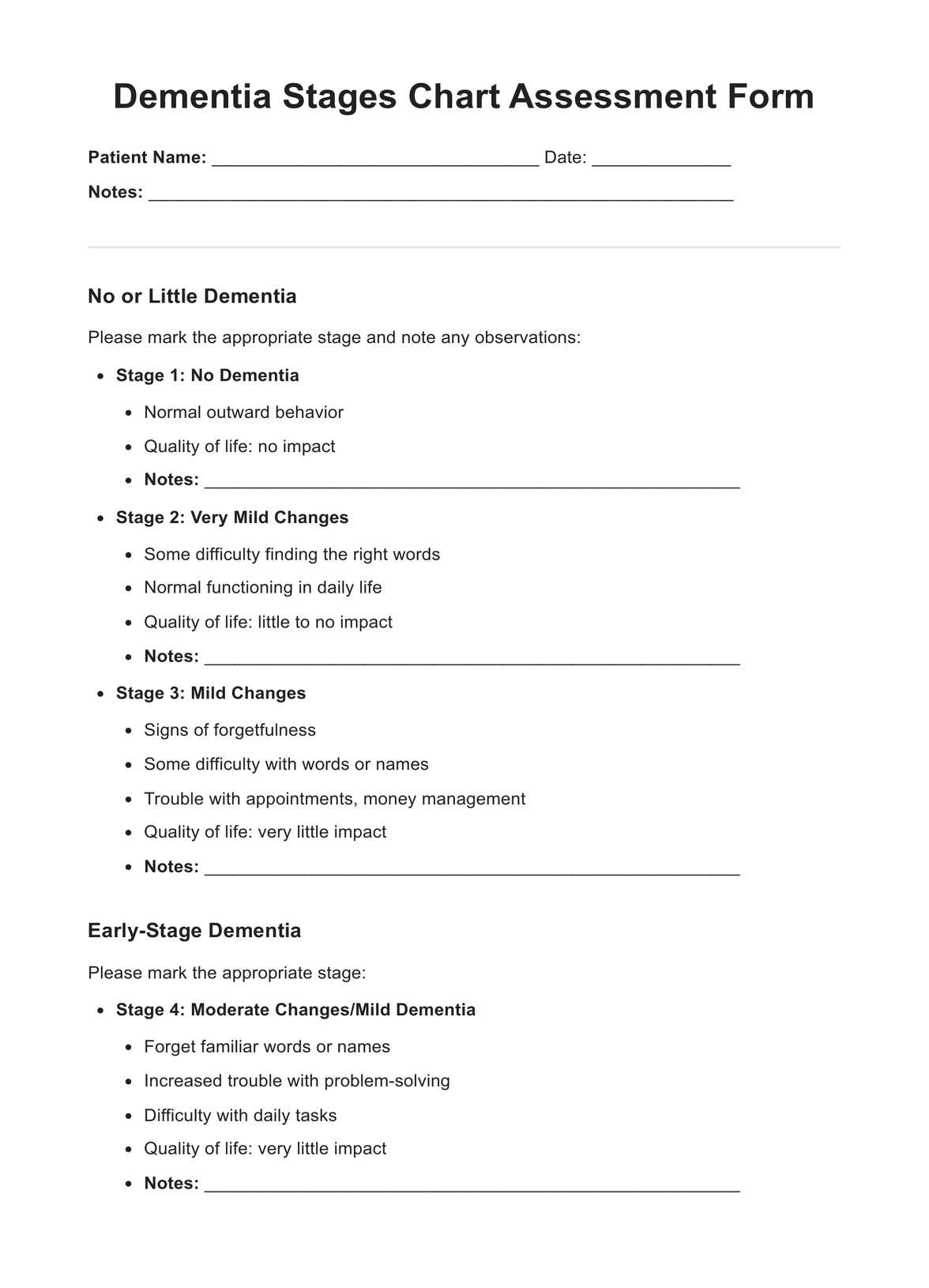
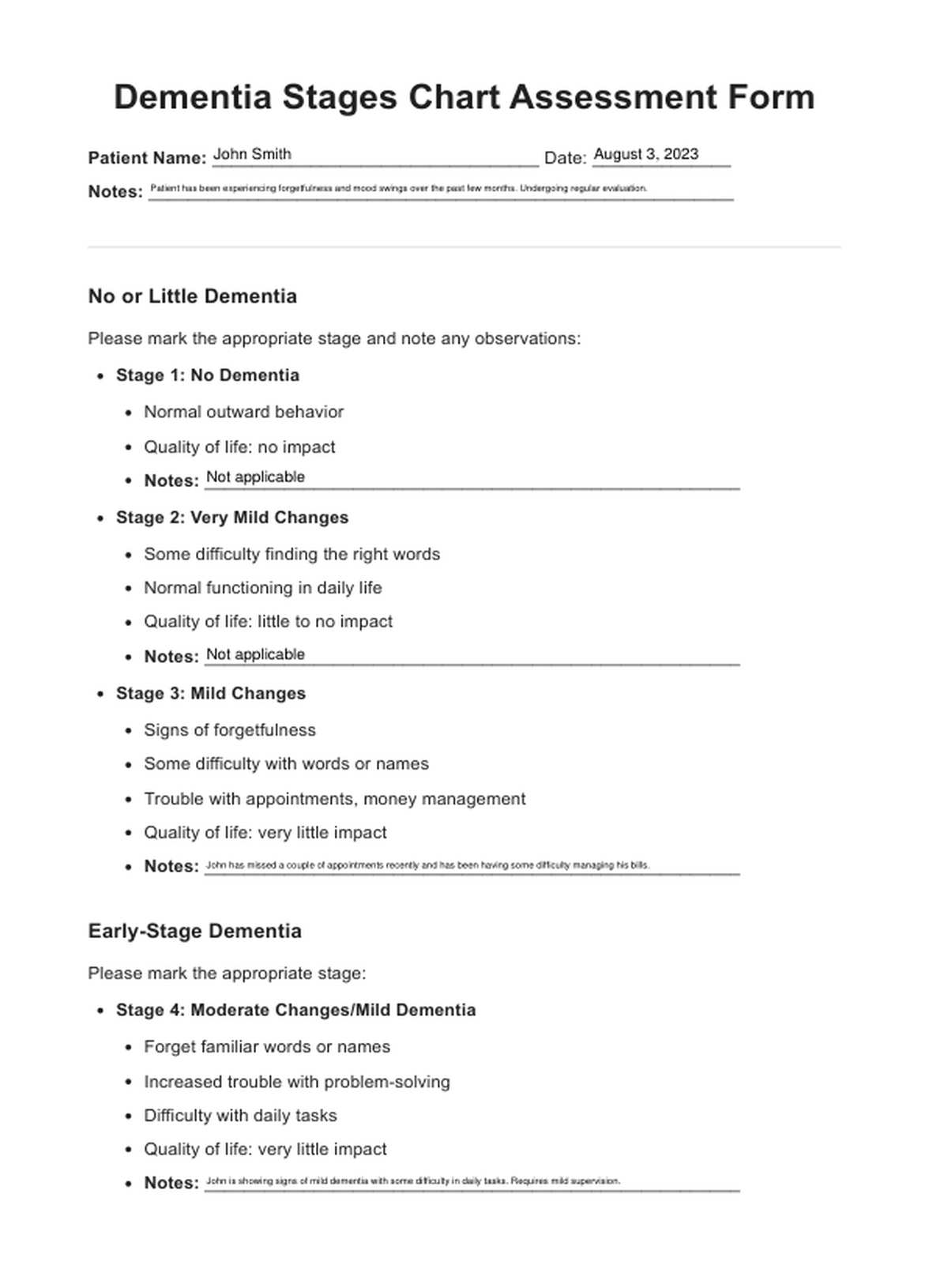













-template.jpg)






























































































